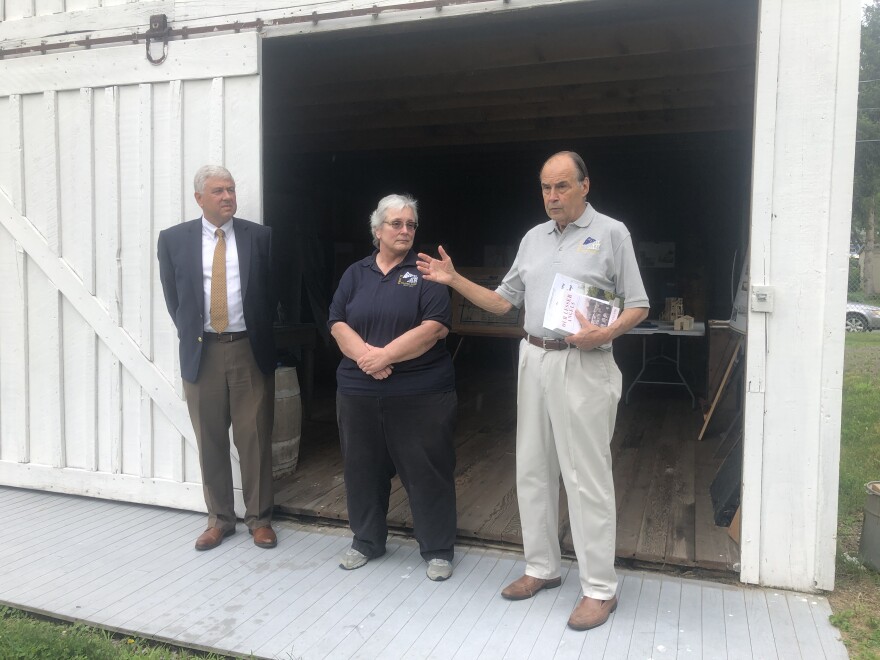The city of Elmira’s historic past meets its present when the Friends of the Elmira Civil War Prison Camp hosts its first Civil War Symposium in August with Elmira College.
Elmira’s connection with the American Civil War includes a Confederate soldier prison camp, a stop on the Underground Railroad, and its primary purpose as Union soldier enlistment and training camps.
“A lot of the descendants of soldiers who were here come here and they really appreciate being able to stand on the ground where their ancestors were,” said Terri Olszowy, board member, Friends of the Elmira Civil War Prison Camp.
The organization wanted to present the historical significance of the camps and the city to descendants and local residents alike.

“It’s interesting, the number of people who live here and their families have lived here for many years who have no idea of the history, especially the Civil War history,” explained Martin Chalk, Chemung County legislator and president of the Friends of the Elmira Civil War Prison Camp.
During the years of 1861-1865, Union soldiers came to Camp Rathbun in Elmira, which was one of three military locations in New York state.
Olszowy estimated between 35,000-40,000 troops passed through the city. It was more than the 20,000 estimates long touted by the site.
“You had people coming back and forth on leave. You had people coming in to recruit. You had people that had been drafted because Elmira became the draft depot for western New York,” said Olszowy.
“If you got a draft notice out in Allegheny of Cattaraugus County, guess where you came? You came to Elmira to get enlisted.”
In 1864, Camp Rathbun became Barracks #3 and was converted into a Confederate prisoner-of-war camp.
The prison camp became the topic of most of its coverage, even though it operated for less than a year. The non-profit organization wants to present a more holistic history to enhance how the site is remembered.

“That 20 percent of the history right now is getting 80 percent of our attention. One of our goals is try to shift some of that attention to the other 80 percent of our history and that 80 percent of the history had no direct connection with the Confederacy, except to engage it in combat,” explained Olszowy.
The organization is developing an education center for more research on the site to expand the historical context of the city’s involvement in the Civil War.
“We have four years of war history here. Only 11 months of it dealt with Confederate soldiers,” said Olszowy.
“The other three-and-a-quarter years dealt with the Union, how they recruited, how they drafted, how they went and found deserters and brought them back and ran them through the military-discipline system. They brought them back for hospitalization and convalescence. And those are the kinds of things that impacted this community.”
Attendees of the symposium will experience several history presentations and tour Civil War-related sites around the Elmira area, including the Chemung Valley History Museum, John W. Jones Museum, and Barracks #3 at the Elmira Civil War Prison Camp site.
Details for the three-day event in August can be found on the organization’s website.




